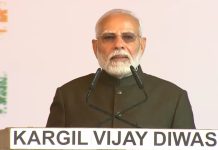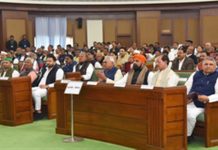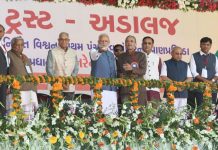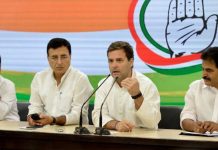 After a period of 34 years, the New Education Policy (NEP) is hot in the air touching with full equity; ensuring that all students thrive in education. It aims on equitable, and quality education along with the promotion of lifelong learning opportunities for all by 2030 (in the light of Sustainable Development Goal -4 related to Education). The new policy aims to pave way for transformational reforms in school and higher education systems in the country. This policy replaces the 34 year old National Policy on Education (NPE), 1986. As of now, the new academic session will begin in September-October 2020; the government aims to introduce the policy before the new session kicks in.
After a period of 34 years, the New Education Policy (NEP) is hot in the air touching with full equity; ensuring that all students thrive in education. It aims on equitable, and quality education along with the promotion of lifelong learning opportunities for all by 2030 (in the light of Sustainable Development Goal -4 related to Education). The new policy aims to pave way for transformational reforms in school and higher education systems in the country. This policy replaces the 34 year old National Policy on Education (NPE), 1986. As of now, the new academic session will begin in September-October 2020; the government aims to introduce the policy before the new session kicks in.
Touching every aspect of education, it brings back almost 2 crore drop out of school children back into the main stream through open schooling system and puts in place a gender fund to support girl’s education. The mission is education for all. It clearly acknowledges the need to embrace output focused reform than current input model; touched upon some key levers which will have some high impact on student learning levels both in higher and school level.
The positive changes seen through my lenses…….
Leverage for working professionals:
The NEP introduces a new concept of academic credit bank so that working professionals can come back and pursue education from where they had left. Indeed an opportunity to enrich oneself.
Higher Education: moving towards liberal approach
M.Phil degree to do away and after Masters, one can go for PhD degree. While graduation programme has multiple exit options giving students the flexibility in learning, a multi-disciplinary bachelor’s degree will be awarded after completing of four years of study. Under Graduate programme will have flexible curricula, creative combinations of subjects and integration of vocational education. Students exiting after two years will get a diploma and those leaving after 12 months will have to study a vocational/professional course. Vocational courses will be made available to students enrolled in all other Bachelor’s degree programmes, including the four year multidisciplinary Bachelor’s programmes as well. The policy envisages broad based, multi-disciplinary, holistic Gross Enrolment Ratio in higher education to be raised to 50 % by 2035; 3.5 crore seats to be added in higher education.
Restructuring the Universities:
Universities to function on the credit-based system which makes way for three categories of institution – research focused universities, teaching focused universities, autonomous colleges. Universities will get autonomy on the basis of credits they have. For example, grade A will have more autonomy than grade B and so on.
Public and private higher education institutions will be governed by the same set of norms for regulation, accreditation and academic standards. Affiliation of colleges is to be phased out in 15 years and a stage-wise mechanism is to be established for granting graded autonomy to colleges. Over a period of time, it is envisaged that every college would develop into either an ‘Autonomous degree-granting College’, or a ‘constituent college’ of a university
Regulatory structure:
The National Research Foundation will be created as an apex body for fostering a strong research culture and building research capacity across higher education. Higher Education Commission of India (HECI) will be set up as a single overarching umbrella body for the entire higher education, excluding medical and legal education. HECI to have four independent verticals – National Higher Education Regulatory Council (NHERC) for regulation, General Education Council (GEC ) for standard setting, Higher Education Grants Council (HEGC) for funding, and National Accreditation Council( NAC) for accreditation. University Grants Commission, AICT, and National Education for Teachers will now be handled by one regulator working via self-discloser based system while maintaining transparency. Single-stream of higher education institutions will be phased out over a period of time, and will move towards multidisciplinary.
Internationalisation of Higher Education:
Paving the way for foreign universities to set up campuses in India, the new National Education Policy (NEP) states that the world’s top 100 universities will be “facilitated” to operate in the country through a new law. A legislative framework facilitating such entry (of foreign universities) will be put in place, and such universities will be given special dispensation regarding regulatory, governance, and content norms on par with other autonomous institutions of India.
Centre and states will work together to increase the education spending to 6% of the GDP as against the current spending of around 4.4%. The Ministry of Human Resource is to be renamed to’ Ministry of Education’.

The School Pedagogy:
The new NEP aims at pre-primary education and provides foundational literacy to all by 2025. Instead of following the 10+2 structure, the NEP replaces with 5+3+3+4 schooling model. Students in the age group of 3-8 years will be part of the foundation stage, 8-11 age group for preparatory schooling, 11-14 years for middle school and 14-18 for secondary level. Instead of exams being held every year, school students will sit only for three – at Classes 3, 5 and 8. Besides, the high stake Board exams at Class 10 and Class 12 level will be ‘low stake’ and may be conducted more than once a year.
The Curricula:
The rigid course structure will be reduced with the combination of science and arts streams, curricular and extracurricular activities. The NEP emphasized the need to track the learning outcome of students from pre-school level to school leaving grade. The policy has emphasised mother tongue/local language/regional language as the medium of instruction at least till Grade five, but preferably till Grade eight and beyond. It envisages a shift from summative assessment to regular and formative assessment, which is more competency- based, promotes learning and development, and tests higher-order skills, such as analysis, critical thinking, and conceptual clarity. A new National Assessment Centre, ‘PARAKH’ (Performance Assessment, Review, and Analysis of Knowledge for Holistic Development), will be set up as a standard-setting body.
The NEP 2020 aims to ensure that no child loses any opportunity to learn and excel because of the circumstances of birth or background. Every state/district will be encouraged to establish “Bal Bhavans” as a special daytime boarding school. Free school infrastructure can be used as ‘Samajik Chetna Kendras’.
An independent, state-wide, regulatory body called the State School Regulatory Authority will be created for each state. A National Research Foundation will be established. The NEP aims to create a new apex body, the Rashtriya Shiksha Aayog or National Education Commission, headed by the Prime Minister of India. The panel will be responsible for developing, articulating, implementing, evaluating and revising the vision of education in the country.
Technology in Education:
Given the disruption caused by the Covid-19 pandemic and the overnight move to online classes, the policy has proposed the setting up of a National Educational Technology Forum (NETF), a platform for the free exchange of ideas on the use of technology to enhance learning, assessment, planning, administration, etc., for both school and higher education.
Way ahead:
With a breath of fresh air within India, proper implementation of NEP 2020 will fundamentally transform the India‘s education system. What is the need of the hour is India needs to dominate in the future decades of growth and drive the education requirements of giving more viable options to Indian students who head overseas each year in search of quality education.
(Dr Sangita Laha is an Associate Professor & Dean of National University of Study & Research in Law, Ranchi. Views are her own)












